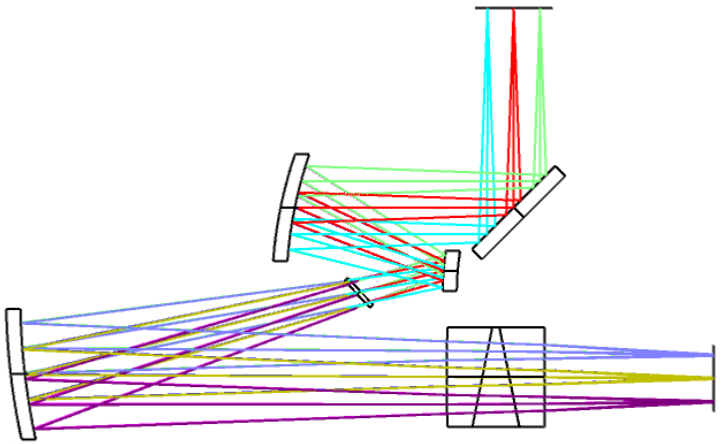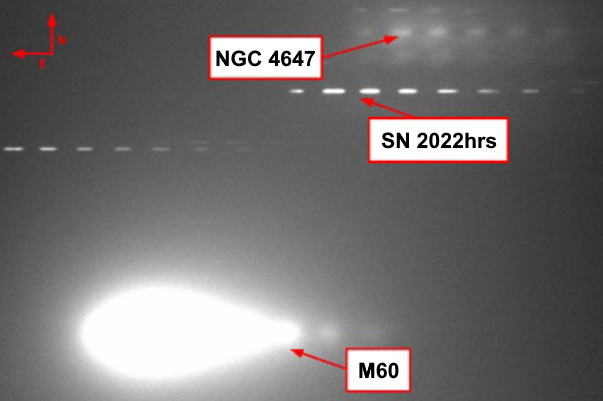TAMPICO

After completing ETSI, which uses multi-bandpass filters combined with a prism spectrograph to produce simultaneous colors of an object, we plan to build a similar instrument for the Two-meter Twin Telescope (TTT) in the Canary Islands. This instrument, Texas A&M's Precision Instrument for Color Observations (TAMPICO), brings new observing capability to the astronomical community by facilitating routine multi-color observations of almost any LSST variable source and any other science projects from the astronomy community.
Optical Design
While TAMPICO is similar to ETSI, it includes several improvements aimed at broader capabilities and high throughput into the ultraviolet. A modified Offner relay after a flat mirror allows for a small footprint while maintaining excellent image quality and an accessible pupil. The small footprint can be packaged in a roughly 250 x 250 x 500 mm volume. The accessible pupil allows for switching filters, a reduced filter clear aperture requirement, and requiring only a single pass through the filter when placed at the pupil.

The design produces 0.082 arcsec/pixel and a 4.45 arcminute field-of-view with TAMPICO's detector system. The filter wheel includes 8 filter positions allowing for many multi-band filter selections. The images are captured by an sCMOS detector, which is capable of high-cadence, low-noise imaging.
Science Capability
TAMPICO includes modes that extends into the ultraviolet and mechanisms that allow for multiple potential bandpass selections. It can obtain precise colors of sources as faint as ~20 mag in a relatively short exposure time on a two-meter-class telescope.
One example of a science project TAMPICO can facilitate is the study of variable optical emission in Active Galactic Nuclei (AGN). The inner regions of AGNs are too compact and distant to be spatially resolved with most instruments, but the reverberation mapping (RM) technique can map out the geometry of inner regions, as shown in the figure below. TAMPICO is suited for the continuum and broad line region methods.

TAMPICO can significantly contribute to continuum RM studies, allowing a deeper wider, and faster look into the accretion disks of AGN. It also offers the opportunity to study high energy astrophysics of relativistic jets in AGN.
Another science project is the study of supernovae. TAMPICO includes a mode specifically tuned to identify type Ia supernovae by deploying filter bandpasses that isolate features commonly used to determine the type of supernova. This mode will be an improvement upon ETSI, which we used on supernovae such as SN2022hrs.

TAMPICO's greatest impact comes through the use by the community for variable source follow-up. NOIRLab offers time on the TTT telescope through a TAC-request process, allowing for anyone in the astronomy community to use TTT and TAMPICO for any science project. Additionally, since it is a robotic observatory, the TTT telescope and TAMPICO can rapidly observe discovery alerts from other observatories.
